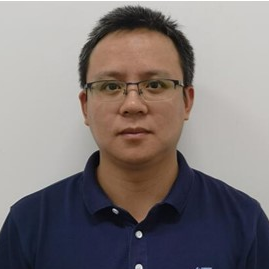Advances in Biophotonics
A special issue of Photonics (ISSN 2304-6732). This special issue belongs to the section "Biophotonics and Biomedical Optics".
Deadline for manuscript submissions: closed (31 October 2023) | Viewed by 1389
Special Issue Editors
Interests: photoacoustic tomography; thermoacoustic tomography; image-guided electromagnetic and ultrasound interventions of cancers and brain
Special Issues, Collections and Topics in MDPI journals
Interests: photoacoustic imaging; dermatology; molecular probe; drug delivery system; immunotherapy
Special Issues, Collections and Topics in MDPI journals
Special Issue Information
Dear Colleagues,
Biophotonics is a combination of biology and photonics, with photonics being the science and technology dedicated to the generation, manipulation, and detection of photons. It involves the development and application of optical techniques, particularly imaging, for the study of biological molecules, cells, and tissue. Through years of development, biophotonics has become the established general term for all techniques that deal with the interaction between biological items and photons. Areas of application are life science, medicine, agriculture, etc. Nowadays, biophotonics is an interdisciplinary field involving the interaction between photons and biological materials including tissues, cells, sub-cellular structures, and molecules. The objective of this Special Issue is to provide a vehicle for communicating important advancements in the use of optical methods/technologies for medical imaging and therapies.
For this Special Issue, the topics of interest include, but are not limited to:
- Optical imaging;
- Terahertz imaging;
- Optical coherence tomography;
- Near-infrared spectroscopy;
- Photoacoustic/thermoacoustic tomography and microscopy;
- Photobiomodulation;
- Photodynamic therapy;
- Photoimmunotherapy;
- Deep learning and artificial intelligence in optical imaging;
- Translational and clinical applications.
Dr. Lin Huang
Dr. Zeyu Chen
Dr. Huan Qin
Guest Editors
Manuscript Submission Information
Manuscripts should be submitted online at www.mdpi.com by registering and logging in to this website. Once you are registered, click here to go to the submission form. Manuscripts can be submitted until the deadline. All submissions that pass pre-check are peer-reviewed. Accepted papers will be published continuously in the journal (as soon as accepted) and will be listed together on the special issue website. Research articles, review articles as well as short communications are invited. For planned papers, a title and short abstract (about 100 words) can be sent to the Editorial Office for announcement on this website.
Submitted manuscripts should not have been published previously, nor be under consideration for publication elsewhere (except conference proceedings papers). All manuscripts are thoroughly refereed through a single-blind peer-review process. A guide for authors and other relevant information for submission of manuscripts is available on the Instructions for Authors page. Photonics is an international peer-reviewed open access monthly journal published by MDPI.
Please visit the Instructions for Authors page before submitting a manuscript. The Article Processing Charge (APC) for publication in this open access journal is 2400 CHF (Swiss Francs). Submitted papers should be well formatted and use good English. Authors may use MDPI's English editing service prior to publication or during author revisions.
Keywords
- optical imaging
- terahertz imaging
- photoacoustic imaging
- photobiomodulation







